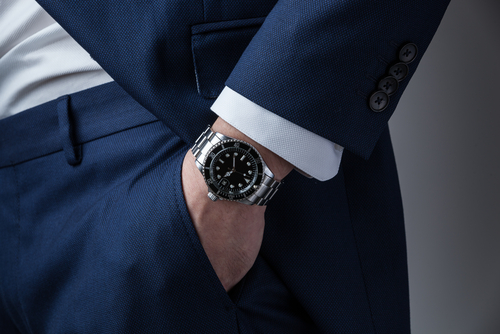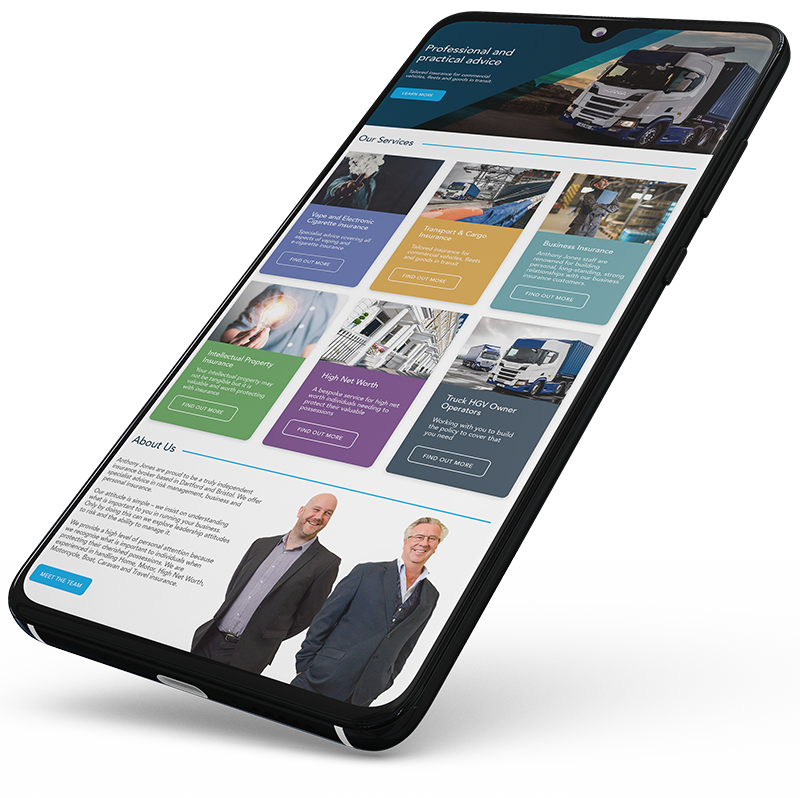If you collect Rolex watches, it’s important to learn to tell the difference between what’s real and what’s fake.
In this post we’ll outline some key things that will tell you if a Rolex is real. Please note that this post is intended to provide a brief overview, and should not be treated as expert advice for appraisals.
Have you taken the necessary steps to secure and insure your watch collection? Our High Net Worth insurance team is always on hand to discuss how you can best protect your most valuable possessions. If you want to discuss your needs, get in touch on 0208 290 9086 or email us at personal@anthonyjones.com.
The Telltale Signs of a Fake Rolex
Serial and Model Numbers
Look between the lugs at the 6 o’clock position on the watch’s dial for a serial number. Then look between the lugs at the 12 o’ clock position for the model number, along with the words ORIG ROLEX DESIGN.
If the watch is real, you’ll see fine engravings cut deeply, which should glow when you hold them at an angle in the light. But if the watch is fake, these engravings might be blurry and imprecise, and they may not catch the light.
Another telltale sign: A real Rolex will have different model numbers and serial numbers. A fake might use the same number for both. Some forgers are lazy.
Weight
A real Rolex is weightier than a fake Rolex, due to the highly refined metals and components used to make it. Hold the Rolex in your hand. If it feels flimsy and lightweight, it might be a fake.
Case Back
With a few notable exceptions, most genuine Rolex watches have solid case backs. A fake Rolex, though, might have a transparent back, showing the interior workings. This may be an attempt to lure unwitting buyers through demonstrating “superior craftmanship”. But ironically, if you can see the watch’s mechanism without opening it, then it’s usually a sign that it’s a fake!
If the watch has a solid case back, though, don’t automatically assume that it’s genuine. Look for logos, engravings, and markings. If you see any, then it could indicate that the watch is fake. Rolex tends to go for a minimalism approach to certain aspects of their design.
How the Second Hand Moves
How does the second hand move on the Rolex?
If it’s real, it should glide smoothly and silently around the watch’s dial. If it’s fake, it may tick and tock just like any other watch.
This is a big tell, but take care with certain models. Most Rolex watches are mechanical, but certain models use a quartz movement, which will of course create a distinctive ticking sound. These models are particularly rare, though.
Dial
This one can be a lot more subtle, the sort of thing that only a seasoned Rolex expert may detect. Basically, a real Rolex’s dial is perfect. It’s immaculate to the finest detail, from the spacing between the letters to the alignment of the markers. The dial on a fake Rolex, though, might look slightly off.
Maybe the finish looks a little dull, or otherwise imperfect. Or maybe the lettering seems a little uneven, or one or two of the markings look misaligned.
Or maybe the signs of forgery will be a bit more obvious – spelling errors are not uncommon!
If the Rolex was manufactured in 2002 or later, also look out for a tiny laser etching of Rolex’s crown logo on the dial. This etching is extremely difficult to forge, so most fraudsters simply won’t bother.
Date
If the Rolex displays a date on a dial, there’s an easy way to tell if it’s real or fake. Rolex uses “Cyclops lenses” to magnify the date. On a real Rolex, this lens bulges outwards. On a fake, the lens will lie flat.
Finish
Anyone who’s ever felt a real Rolex will know how good they look. They use a variety of finishes, giving it a lustre that’s almost impossible to forge. A fake, by contrast, may appear dull, scuffed, or otherwise imperfect.
Papers and Documentation
If the Rolex is real, you should be able to see thorough documentation confirming its authenticity. This should include a manual, a warranty card, and an authenticity certificate. You should be able to look up any details online, or check them with an appraiser, to confirm their authenticity.
A fake Rolex might still come with documentation. But like the watch itself, this documentation will likely be shoddy in some way, and will not stand up to scrutiny.
Even If The Rolex is Real, Make Sure It’s Not Stolen!
It’s one thing to ensure that the Rolex you intend to buy is authentic. But it’s equally important to ensure that it’s not been stolen.
Look up the watch’s details on the Watch Register, which may quickly tell you whether or not the watch has been stolen.
This is why it’s vital to only ever buy second-hand Rolexes from reputable dealers. So how can you tell if your Rolex dealer is trustworthy? Online reviews and testimonials can help. A well-established physical store is better than a faceless online presence.
Transparency is also important. The dealer should allow you to scrutinise the Rolex before you buy it. They should readily answer any questions you might have, and they should be able to provide certificates of authenticity and other key documents for every watch they sell.
Keep Your Luxury Watch Collection Safe!
Counterfeit watches are unfortunately very common. So too is luxury watch theft. There are reports that luxury watch theft is on the rise in urban areas across Europe.
Read our full guide to protecting yourself from luxury watch theft here.
Our High Net Worth insurance team is always on hand to discuss how you can best protect your most valuable possessions. If you want to discuss your needs, get in touch on 0208 290 9086 or email us at personal@anthonyjones.com.


